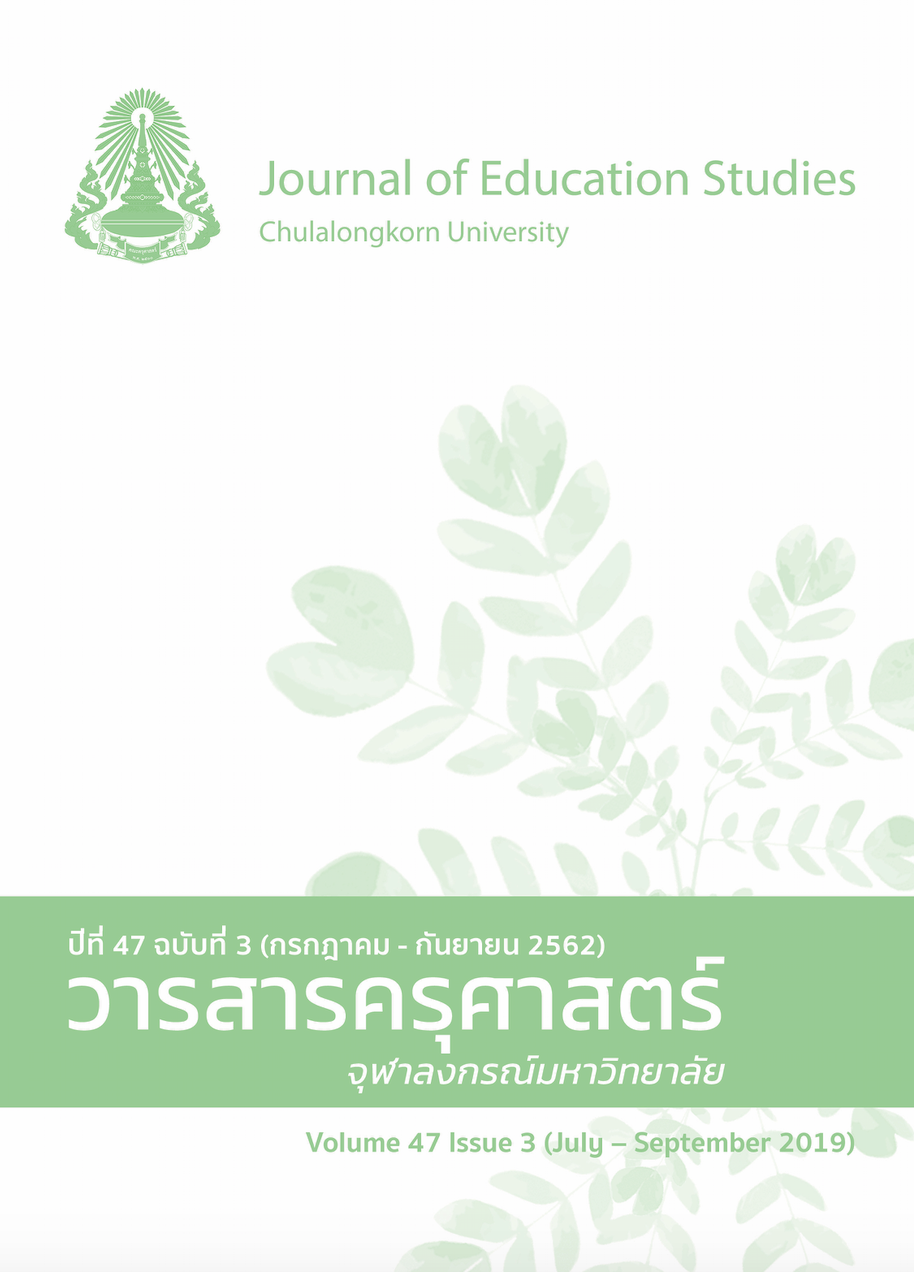Development of Quality Administration Model for Middle-Sized Secondary Schools in the Northeast
Keywords:
QUALITY ADMINISTRATION, MIDDLE-SIZED SECONDARY SCHOOL, NORTHEASTAbstract
The purposes of this research were to develop and examine the quality management model of medium sized Mathayom Suksa School in north-eastern part of Thailand. The research and development used the mixed method approach. There were four phases of the study. Phase 1 was the study of the components of quality management through synthesizing and in-depth interviews with 5 directors from successful management schools. Phase 2 was comprised of the contraction of development of the quality management model by using Delphi technique from 21 experts. Phase 3 was to examine the quality management model through survey research participated by 180 secondary school administrators. Phase 4 was to evaluate the quality management model with experts in through focus group discussion. The findings were as follows:
The quality management model comprised 8 elements: 1) leadership of school administrators; 2) strategic planning; 3) team and team building; 4) technology and information; 5) service focus; 6) social responsibility; 7) results of the implementation; and
8) progress tracking. The examination of the quality management model was found at the highest level in all aspects. The quality management model was evaluated by a group of expert to be very helpful and the feasibility and appropriateness of the model of secondary schools in the northeast was found at the highest level.
References
ภาษาไทย
ไชยยน คำมะวงษ์. (2556). ข้อเสนอเชิงนโยบายเพื่อพัฒนาการบริหารการศึกษาชั้นสูงของเอกชนของประเทศสาธารณรัฐประชาธิปไตยประชาชนลาว (วิทยานิพนธ์ปริญญาดุษฎีบัณฑิต
ไม่ได้ตีพิมพ์). มหาวิทยาลัยราชภัฏอุดรธานี, อุดรธานี.
บัวพันธ์ ผิวทอง. (2556). รูปแบบการเสริมสร้างพลังอำนาจทรัพยากรมนุษย์ของโรงเรียนมัธยมศึกษาขนาดกลางในสำนักงานคณะกรรมการการศึกษาขั้นพื้นฐาน (วิทยานิพนธ์ปริญญาดุษฎีบัณฑิต ไม่ได้ตีพิมพ์). มหาวิทยาลัยบูรพา, ชลบุรี.
บุณยกุล หัตถกี. (2556). รูปแบบการบริหารคุณภาพสู่ความเป็นเลิศของโรงเรียนขนาดเล็ก (วิทยานิพนธ์ปริญญาดุษฎีบัณฑิต ไม่ได้ตีพิมพ์). มหาวิทยาลัยบูรพา, ชลบุรี.
ปรียาวดี ผลอเนก. (2556). การจัดการคุณภาพ. กรุงเทพฯ: มหาวิทยาลัยราชภัฏธนบุรี.
เมธา สีหานาท. (2558). การพัฒนารูปแบบการบริหารคุณภาพสถานศึกษาขั้นพื้นฐานสู่มาตรฐานสากล (วิทยานิพนธ์ปริญญาดุษฎีบัณฑิต ไม่ได้ตีพิมพ์). มหาวิทยาลัยราชภัฏมหาสารคาม, มหาสารคาม.
สมชาย วรกิจเกษมสกุล. (2554). ระเบียบวิธีการวิจัยทางพฤติกรรมศาสตร์และสังคมศาสตร์. อุดรธานี: มหาวิทยาลัยราชภัฏอุดรธานี.
สมศักดิ์ ดลประสิทธิ์. (2555). ผู้บริหารกับการวิจัยเพื่อพัฒนาการจัดการศึกษา. กรุงเทพฯ: สํานักงานเลขาธิการสภาการศึกษา.
สำนักงานคณะกรรมการการศึกษาขั้นพื้นฐาน. (2556). แนวทางการประเมินคุณภาพตามมาตรฐานการศึกษาขั้นพื้นฐานเพื่อการประกันคุณภาพภายในของสถานศึกษา. กรุงเทพฯ: ชุมนุมสหกรณ์การเกษตรแห่งประเทศไทย.
สำนักงานคณะกรรมการการศึกษาขั้นพื้นฐาน. (2557). กลยุทธ์ ปี พ.ศ. 2558. กรุงเทพฯ: ชุมนุมสหกรณ์การเกษตรแห่งประเทศไทย.
สำนักงานรับรองมาตรฐานและประเมินคุณภาพการศึกษา. (2558). ผลการประเมินคุณภาพภายนอกรอบสาม. สมุทรปราการ: ออฟเซ็ท พลัส.
สุนิสา วิทยานุกรณ์. (2552). การพัฒนารูปแบบการจัดการศึกษาสู่ความเป็นเลิศในโรงเรียนเอกชน (วิทยานิพนธ์ปริญญาดุษฎีบัณฑิต ไม่ได้ตีพิมพ์). มหาวิทยาลัยบูรพา, ชลบุรี.
อนันต์ เตียวต๋อย. (2551). รูปแบบการบริหารคุณภาพแบบเบ็ดเสร็จในมหาวิทยาลัยเทคโนโลยีราชมงคล (ดุษฎีนิพนธ์ปริญญาดุษฎีบัณฑิต ไม่ได้ตีพิมพ์). มหาวิทยาลัยศิลปากร, นครปฐม.
ภาษาอังกฤษ
Dansereau, F. A. (2005). Dyadic approach to leadership: creating and nurturing this approach under fire: Leadership Quarterly, 6(4), 479-490.
Guskey, R. T. (2000). Evaluating Professional Development. Thousand Oaks, CA: Corwin Press.
Kouzes. J. M., & Posner, B. Z. (2007). The leadership Challenge (4th ed.). San Francisco, CA: Jossey Bass.
Steers, R. M. (1997). Antecedents and outcomes of organizational commitment. Administrative Science Quarterly, 2(2), 46-56.




